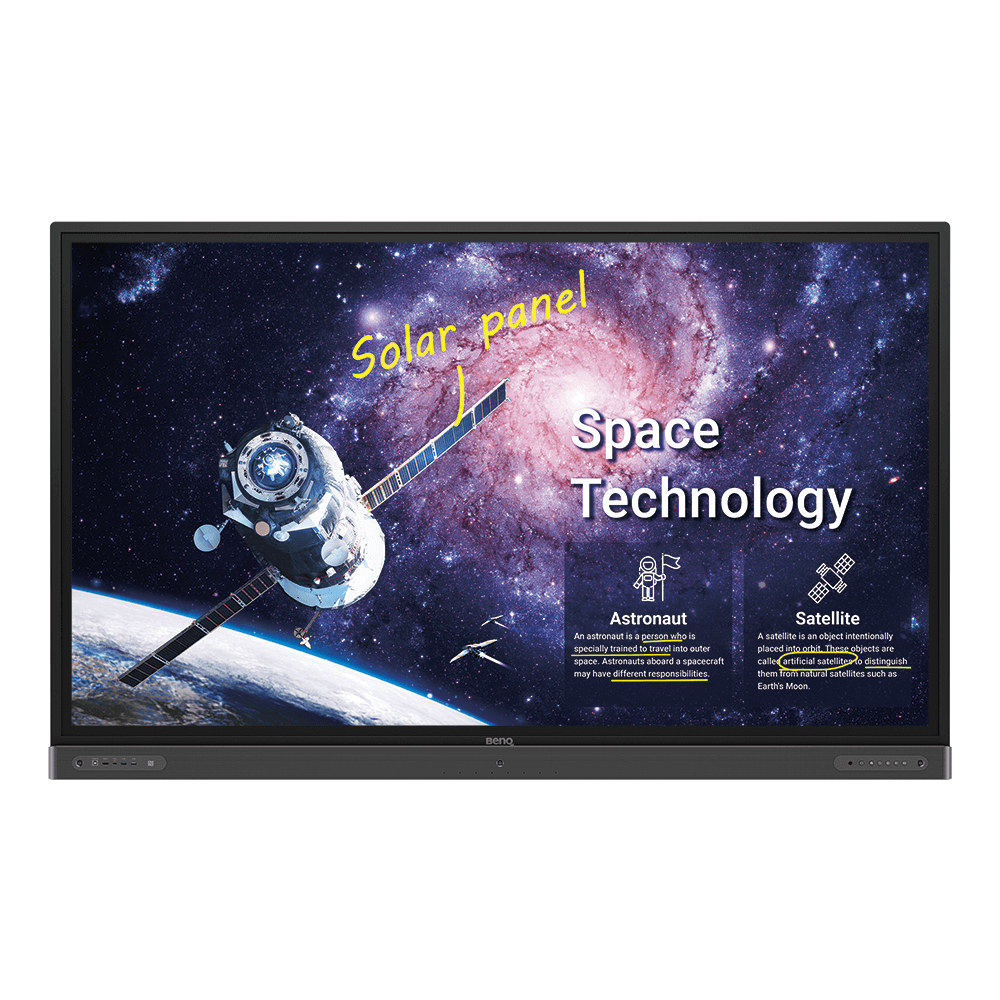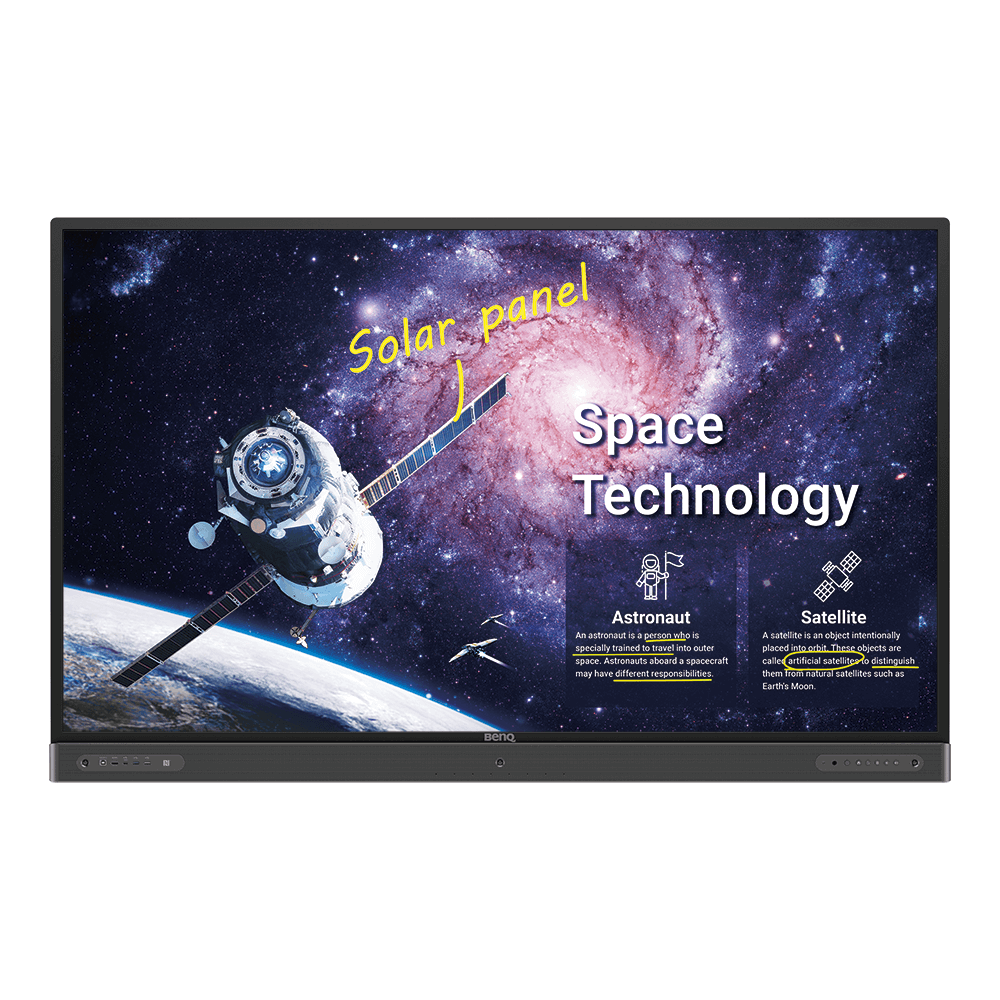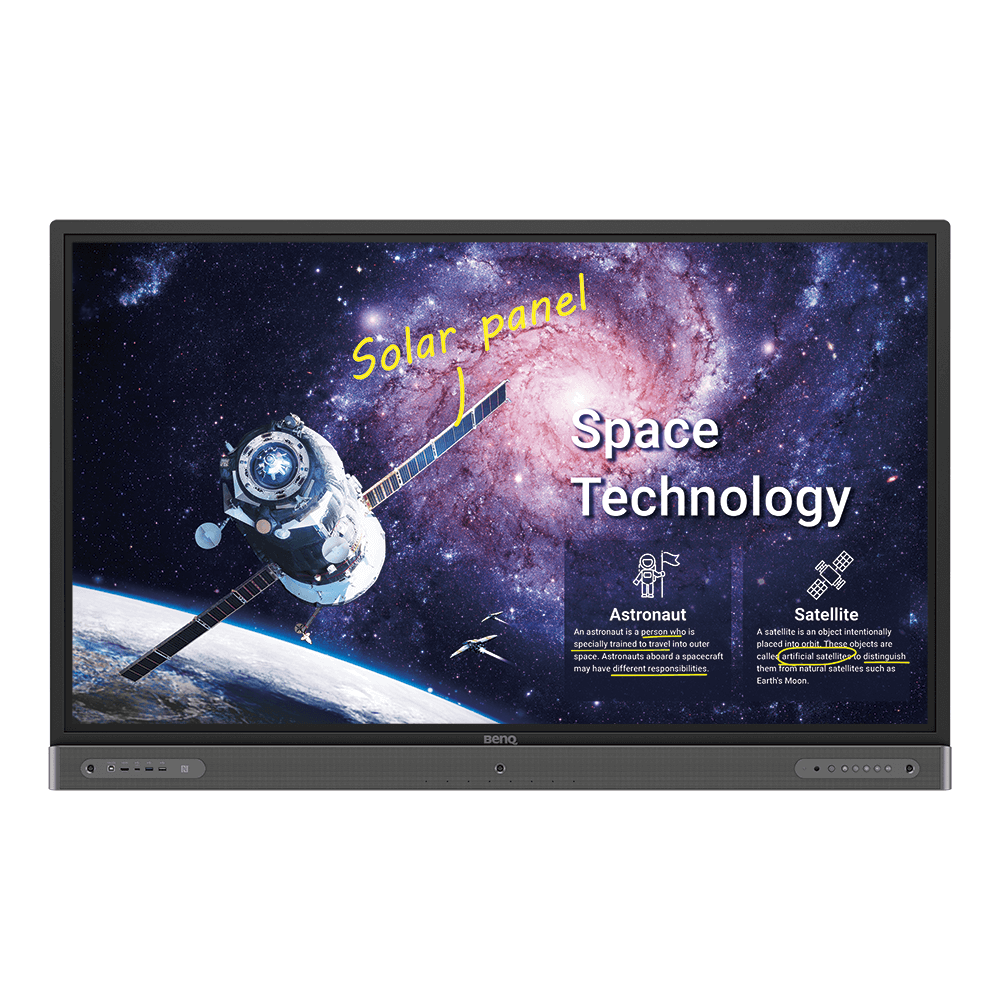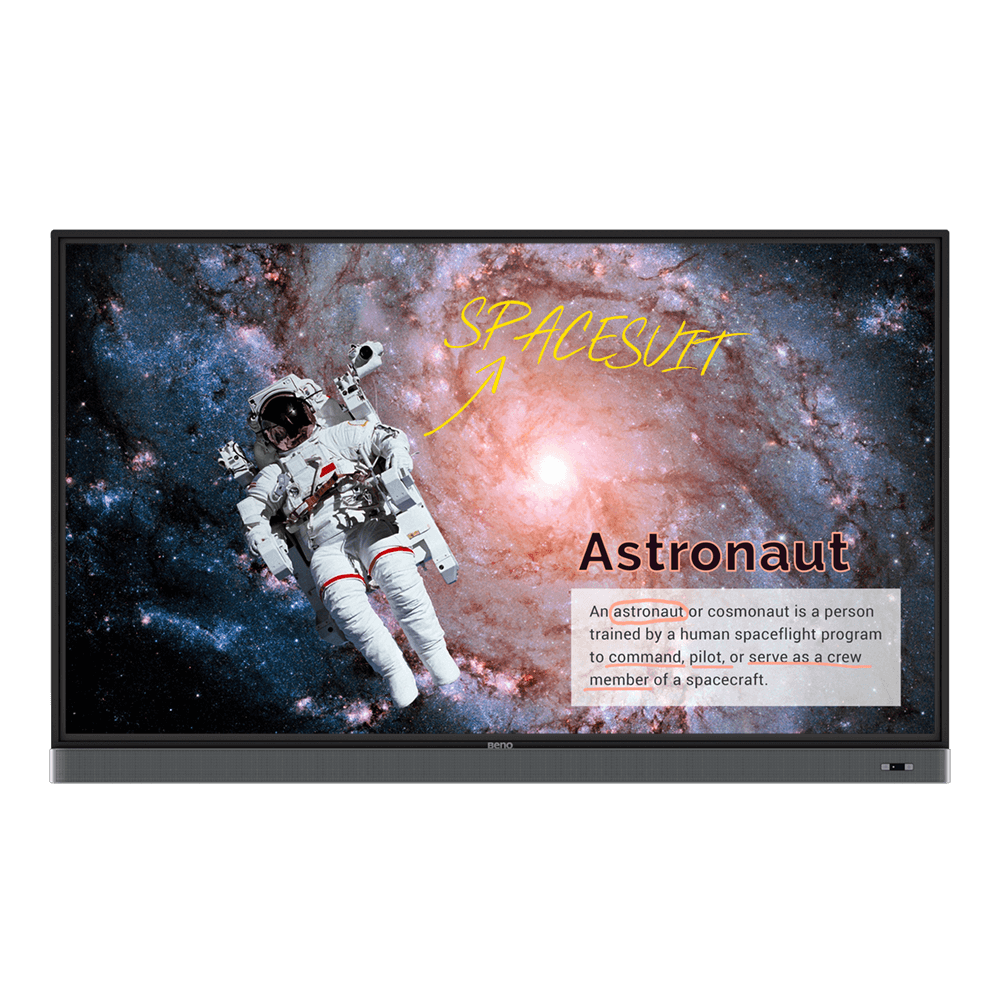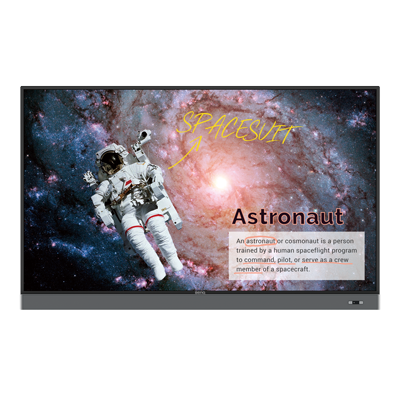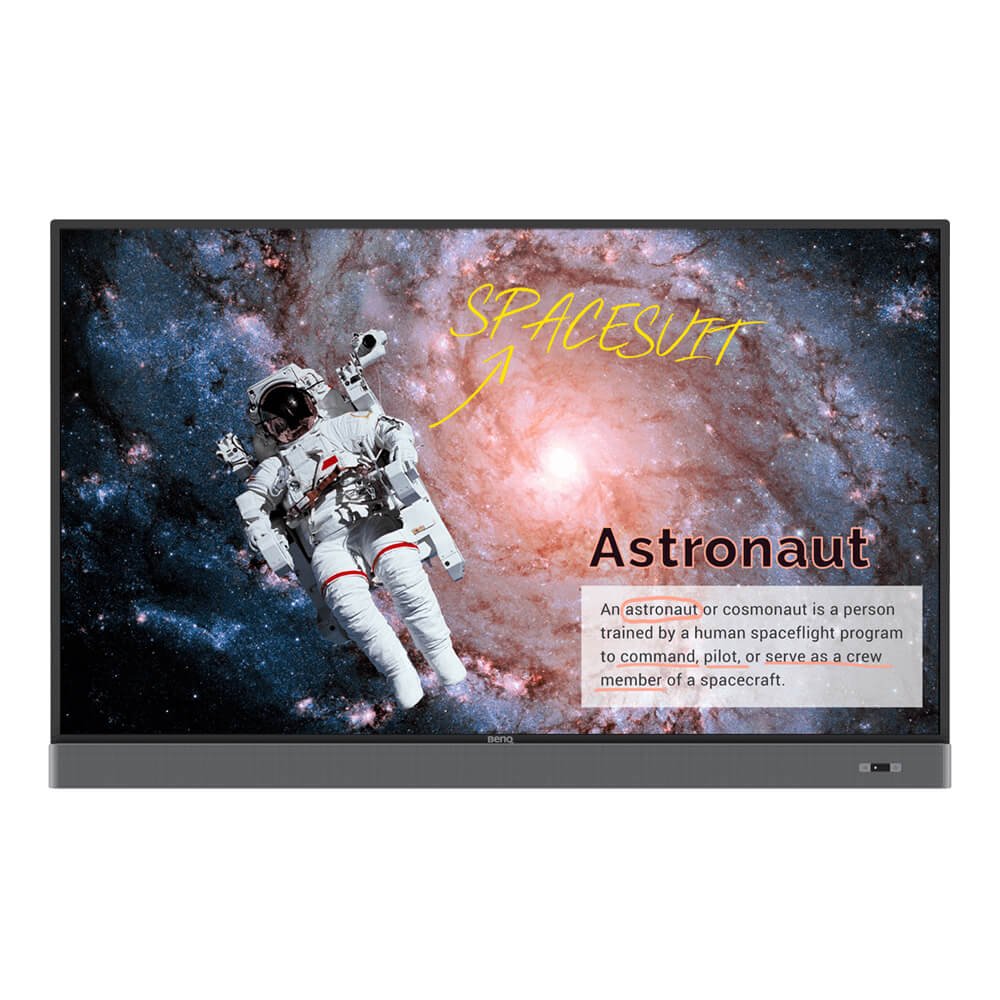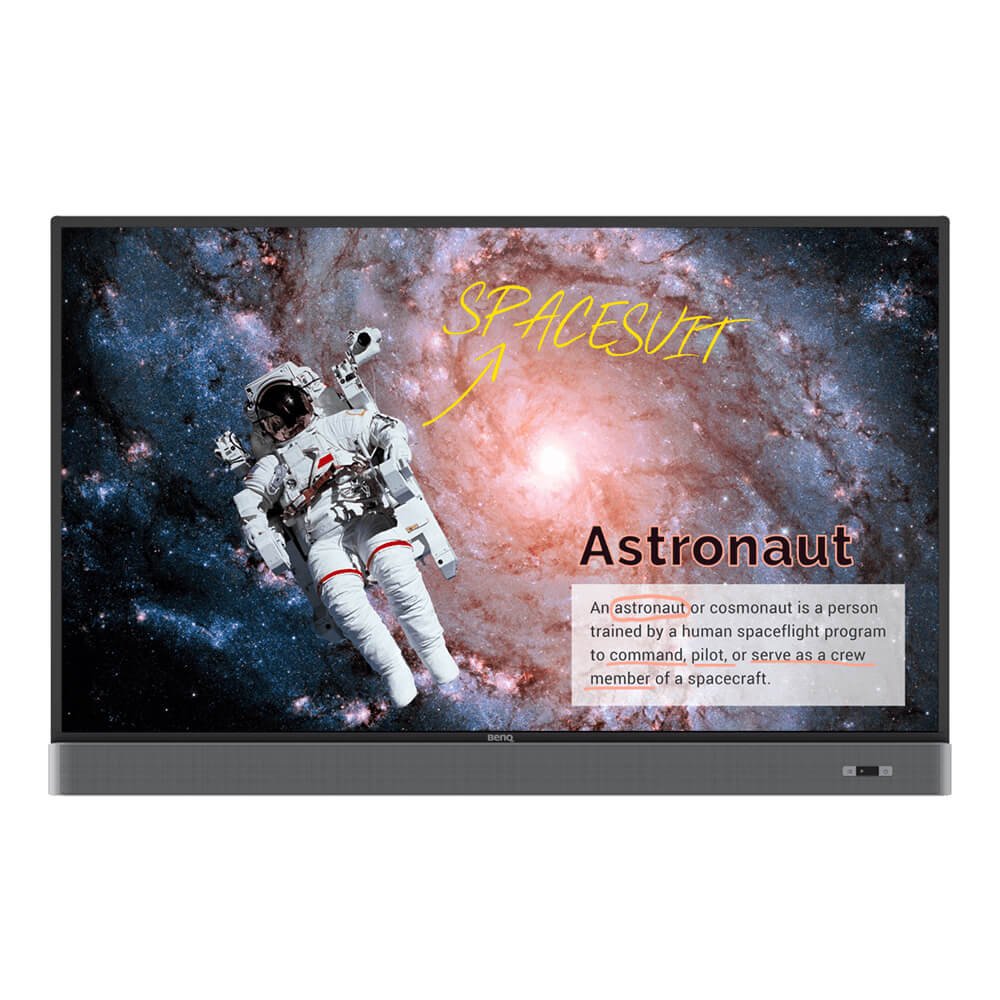Collaboration is a skill your students will need in the future. Now, thanks to BenQ boards, you have a chance to teach your students how to work in a project team!
7 Ideas for Fun World Language Class Activities with BenQ Boards
- Teacher Tips 'N Tricks
- Interactive Displays for Education
- 2022-01-19
While the march of technology and culture often makes many skills that were once essential obsolete, language isn’t one of them. As long as humans communicate by speaking and writing, language will remain one of the most basic yet essential skills a person can have, and being fluently multi-lingual proffers many advantages in life. So, it’s better to start young, and digitally savvy teachers and students working together in properly equipped classrooms deliver fertile ground for the emergence of future polyglots.
It’s a common notion that children pick up languages faster than adults, which makes sense as developing minds are more receptive to new knowledge. However, this should not be taken for granted. Children easily become multi-lingual if several languages or dialects are spoken at home, but if their exposure to different languages are in-class only, proficiency can still take much effort. And results vary by individual, naturally.
To help kids learn new languages, you need the best tools available. Compared to previous eras, our connected world offers ample opportunity for exposure to pretty much every language on the planet, but doing so requires having smart teaching platforms on which to work, and BenQ boards provide just that.
Here are 7 examples of fun, engaging world languages class activities that your students will love for your classroom's BenQ interactive display
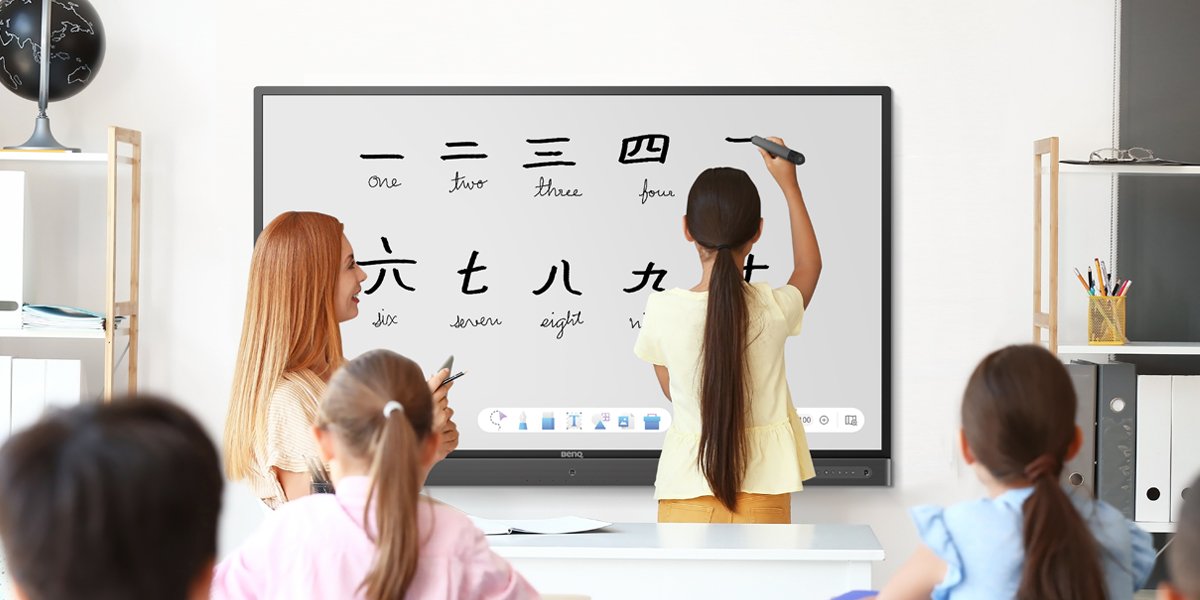
7 World Language Class Activities Examples for BenQ Interactive Boards
Starting with Vocabulary
Often the best way to begin forming foundations for new language intake is working through the vocabulary. Putting up bright, highly visible PowerPoint presentations or PDFs works much better than poring over paper textbooks. Students tend to retain new words at a much higher rate when they’re presented in a large, vibrant format on a relatable screen.
You’re also not as constrained as before thanks to the EZWrite software suite at your disposal. Laden with language-centric features, EZWrite works with the connectivity of BenQ smart boards to bring together files and content you source online plus various editing and notation tools. You can also use the included InstaShare app to cast your laptop or tablet and bring in vocab presentations from there, giving you more options. This flexibility expands vocabulary presentation and review opportunities and creates a firm foundation for further language training.
Games, Quizzes, and Reviews
Using EZWrite directly on the BenQ interactive board in your classroom, you can create various activities to gauge the progress students are making. In addition to traditional quizzes if you so choose, you can play games. These include Hangman and Pictionary, both great for picking up new words and reviewing student knowledge in fun and gently competitive ways. See what other whiteboard games we recommend for teaching.
From online sources available simply and conveniently through the Firefox browser on your BenQ display, you have access to a wealth of vocabulary evaluation resources. Kahoot!- the official partner of BenQ, has loads of games and quizzes that are ready-made to help you review vocabulary performance, or you can choose to create your own. The app is available from BenQ App Store*, and is optimized for your display. We have more tips related to Kahoot! on BenQ board for you here.
Also very handy is Quizlet, which as its name implies is a site dedicated to educational games and gamified quizzes. Once more, all you need to make the most of this amazing resource is just a browser, and with BenQ interactive boards that’s a given and ready to go.
* On certain devices, BenQ App Store can be found under name "BenQ Suggests"
Create an Environment Conducive to Confident Speaking
We’ve all been there, feeling anxious about speaking in a language other than our mother tongue. Thankfully, new technology helps mitigate these natural apprehensions by making language learning a whole lot more fun than it used to be. Gamification is your friend once more in the effort to help kids become polyglots.
Taboo is a classic word game that like many things works better when it’s aided by a big 4K screen. You can learn more about setting up a game of taboo here, but put simply, you create a PowerPoint with words to describe and a list of words that are not allowed in said descriptions. Students aren’t supposed to look initially at words shown on the interactive board, and using the included EZWrite timer feature adds a fun element of urgency and even tension to the game. And as we all know, if the brain thinks there’s competition, it also thinks there’s a reward lurking somewhere and learning becomes more effective. It’s just how we’re wired.
Spontaneous, organic speech exercises like an impromptu speech contest are another way to enhance language learning. This is simple and effective, as all you need to do is create a text file or PowerPoint with words you want to emphasize. Display those words prominently on the BenQ board and invite students to talk about each word, saying whatever they wish. More storytelling than speech making, this activity has the double benefit of improving language skills and helping kids overcome fears of public speaking.
Best of all perhaps are group discussions and team practice, as language is after all one of the most communal of humanity’s creations. If groups of three or more kids are not viable, then pairs will work just fine. Create a topic for the kids to discuss, or offer them to come up with their own ideas. For further insight into their degree of interest and engagement, we recommend you take a look at bouncyballs.org, a site with a unique approach to interacting with sound. Initially designed to control classroom noise levels, Bouncyballs helps you evaluate the confidence with which students speak and interact among themselves. Just remember to have the BenQ board microphone array turned on and set as the correct audio device.
Language Exposure and Attunement
Watching movies has been a time-honored way to get kids used to the sound of a new language for a century or more, and TV’s role in language exposure is well documented it almost doesn’t need mentioning. Modern students experience more languages than any previous generation. Between increasingly diverse societies, streaming content from all over the world (your older students probably watched Squid Game, after all), music, and of course video games, there’s a nearly endless supply of language exposure. But of course none of it as structured or focused as that of a well-designed class.
Sure, BenQ boards in glorious 4K and HDMI play great hosts to Blu-ray movies. With wireless computer screen mirroring functionality, they also act as an excellent screen to watch the stream of your favorite motion pictures or other streamable content. Simply cast your computer screen to the BenQ board while playing the movie via InstaShare or HDMI cable, and you will see it in full-size on the large screen. If you have a file, you can also play it directly on the board. Simply upload it to the board via Google Drive or other cloud storage service you use and launch it to watch via BenQ Video Player! However, just plonking the kids in front of the screen may be too passive, and thus should not be relied upon exclusively.
YouTube to the rescue once again. YouTube works best via browser, with no app download needed.
Since there’s no limit to the amount of content found on YouTube and we could write an infinity of articles about this topic alone, we’ll try to be succinct. For younger learners, a good example of YouTube delivering the multi-lingual goods is Pocoyo, an educational animated series that debuted in 2005. It’s available in many languages due to its success, but for example the Spanish version can be found here for convenient access.
More advanced language learners may glean a lot from the famed sophistication of TED Talks. You’ll need to preview the specific talks you want to share in class sessions as many of the topics are adult-only, but all of them are very well presented and enunciated, as presenters are confident and knowledgeable. TED Talks are a good mix of everyday and more advanced vocabulary, which is great for students who need exposure to different ways of approaching any given language. There’s a version of TED in many languages. The Spanish edition of TED is here for your perusal and consideration.
Pen Pals with a Modern Twist
Exchange programs are older than movies, TV, streaming, and perhaps even writing itself. But if sending your class to the other side of the world isn’t doable at the moment, video conferencing surely is. And everything you need to do that is right there on your BenQ board.
Launch the videoconference on your computer, and cast it to the BenQ board via InstaShare. We suggest you place a camera right underneath or above the screen for more natural flow and switch audio output to the interactive display (remember it might also be necessary to do so within the videoconferencing app!). An external microphone might be useful too to ensure high-quality audio input.
The biggest challenge for you will be arranging a session with a school in another part of the world, but there’s plenty of tools that can help with that on the internet (check out this website for some top language exchange sites).
Your school may have a language exchange program already in place, so please do make sure to take advantage of that excellent resource.
The Vanishing Art of Calligraphy
Everyone’s so used to keyboards that many of us feel as if our handwriting skills have completely atrophied. Good thing EZWrite has a special calligraphy background on which one can practice. This works best for languages that use Latin-based alphabets. For languages such as Chinese and Japanese, you can upload custom backgrounds to EZWrite.
Physical brushes work in EZWrite* so kids can practice cursive and calligraphy in many languages. To do so, simply grab a brush and start painting in EZWrite.
If you wish to show your students how to properly hold a paintbrush, for example, hook up a document camera to the board or mirror your phone to the board while in camera mode, point the lens towards your hands, and show your students how it’s done in detail, on the big screen.
All of this of course works on the writing side of language learning, which is very different from spoken practice, but eventually necessary for true fluency.
*Brush mode currently only available in EZWrite 5
Tried and Tested Language Learning Sites
You seemingly can learn everything on the internet as we’ve gathered over the last 30 years, with languages being among the most in-demand topics.
Big and proven sites like Duolingo work directly on your BenQ board’s web browser and provide a wealth of insight and tools as pertains to language training and education. The browser on BenQ boards works just as it does on any other device you have, so it’s second nature to you and your students. The Firefox browser is available on BenQ boards.
Break-time Learning and Exam Streaming
BenQ boards feature X-Sign Broadcast, a very useful way to showcase custom-made messages, YouTube videos or images on multiple screens all around campus at the same time.
This relates to language learning by helping you show educational videos and other materials during break time or have announcements in a language your school is focusing on teaching. You can show content during breaks when students are more relaxed, giving them added opportunities to listen to other languages and become accustomed to new sounds and words.
As for exams, X-Sign Broadcast helps you show language test content in several classrooms school-wide, for example during foreign language mid-term exams. Some of our teachers like to schedule the exams for the whole school at the same time, and use the scheduling function of X-Sign Broadcast to play the relevant videos with the audio for the listening tasks in parallel to ensure fairness. It’s simple and effective and makes the exam process much more manageable.
Easier and More Powerful
Interactive boards save you the hassle and burden of preparing a paper-based language class, while delivering access to essentially boundless resources. And all of them on one focal platform. Unless you really want to, you can just work with the board. No need for extra devices like projectors, CD players, or even a PC. And certainly no need for cumbersome physical props, unless you really want those, of course.
Today’s digitally native students find interactive boards more relatable than older and more “traditional” educational tools, leading to better results. One has to keep up with the times, after all.
Take a look at the many other ways BenQ boards help create smart classrooms and check out more tips and tricks for teachers below!
Teacher Tips 'N Tricks
-
Trends & Knowledge
[Teacher Tips 'N Tricks] How to Prepare Your Students for Collaborative Future in Tech-Rich Classrooms?
2021.11.05 -
Trends & Knowledge
[Teacher Tips 'N Tricks] 4 Apps You Need to Start Using Now on Your BenQ Board
Here is a list of 4 must-have apps for interactive displays in your classroom that will reshape the way you teach and students learn
2021.09.02 -
Trends & Knowledge
[Teacher Tips 'N Tricks] 5 Websites You Should Be Using Now in Classrooms With BenQ Boards
See 5 examples of websites that can help you teach easier and more efficient and make classes unforgettable, directly from your BenQ Interactive Display
2021.12.03

